Blog & Latest Updates
Fly Fishing Articles
Insects by Common Name


> > The Yakima River
Closeup insects from the Yakima River
Ameletus vernalis (Brown Dun) Mayfly Nymph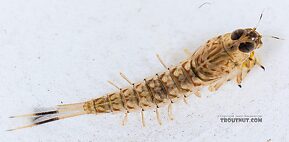 View 9 PicturesI keyed this one out using the Alberta species key from Zloty & Pritchard 1997.
View 9 PicturesI keyed this one out using the Alberta species key from Zloty & Pritchard 1997.
Notes from the ID include:
1. Posterior (Posterior: Toward the back of an organism's body. The phrase "posterior to" means "in back of.") margin of sternites (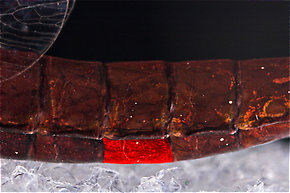 Sternite: The bottom (ventral) part of a single segment on an insect's abdomen.) 6-8 without spines
Sternite: The bottom (ventral) part of a single segment on an insect's abdomen.) 6-8 without spines
2. Mesal (Mesal: Toward the middle.) gill extension "well developed"
3. Basil third of caudal (Caudal: Toward the posterior tip of the body.) filaments pale
4. Anterior (Anterior: Toward the front of an organism's body. The phrase "anterior to" means "in front of.") surface of front femora (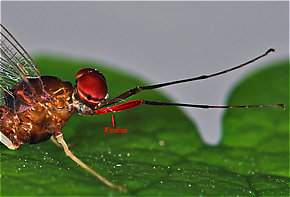 Femur: The main segment of an insect's leg close to the body, in between the tibia and the trochanter.) mostly pale
Femur: The main segment of an insect's leg close to the body, in between the tibia and the trochanter.) mostly pale
5. Dark band on caudal (Caudal: Toward the posterior tip of the body.) filaments begins around segment 20
6. Final instars (Instar: Many invertebrates molt through dozens of progressively larger and better-developed stages as they grow. Each of these stages is known as an instar. Hard-bodied nymphs typically molt through more instars than soft-bodied larvae.) early season
This one keys out pretty cleanly to Ameletus vernalis except the color pattern on the tergites (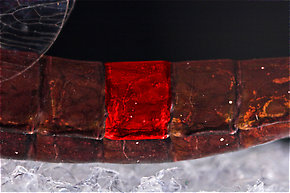 Tergite: The top (dorsal) part of a single segment on an insect's abdomen when it consists of a single chitinous plate (sclerite), or an individual sclerite if the segment has more than one.) doesn't match. However, two species known in Washington aren't included in the key. Of those two, Ameletus vancouverensis would be too small (adult body length 9 mm), but Ameletus andersoni (currently documented only from a spring in Cowlitz County) has a wide range of sizes and emergence times that could be compatible with this one. So I can't rule that species out, but Ameletus vernalis seems the most likely.
Tergite: The top (dorsal) part of a single segment on an insect's abdomen when it consists of a single chitinous plate (sclerite), or an individual sclerite if the segment has more than one.) doesn't match. However, two species known in Washington aren't included in the key. Of those two, Ameletus vancouverensis would be too small (adult body length 9 mm), but Ameletus andersoni (currently documented only from a spring in Cowlitz County) has a wide range of sizes and emergence times that could be compatible with this one. So I can't rule that species out, but Ameletus vernalis seems the most likely.
 View 9 PicturesI keyed this one out using the Alberta species key from Zloty & Pritchard 1997.
View 9 PicturesI keyed this one out using the Alberta species key from Zloty & Pritchard 1997. Notes from the ID include:
1. Posterior (Posterior: Toward the back of an organism's body. The phrase "posterior to" means "in back of.") margin of sternites (

One sternite of this Isonychia bicolor mayfly spinner is highlighted in red.
2. Mesal (Mesal: Toward the middle.) gill extension "well developed"
3. Basil third of caudal (Caudal: Toward the posterior tip of the body.) filaments pale
4. Anterior (Anterior: Toward the front of an organism's body. The phrase "anterior to" means "in front of.") surface of front femora (

The femur of this Isonychia bicolor mayfly spinner is highlighted in red.
5. Dark band on caudal (Caudal: Toward the posterior tip of the body.) filaments begins around segment 20
6. Final instars (Instar: Many invertebrates molt through dozens of progressively larger and better-developed stages as they grow. Each of these stages is known as an instar. Hard-bodied nymphs typically molt through more instars than soft-bodied larvae.) early season
This one keys out pretty cleanly to Ameletus vernalis except the color pattern on the tergites (

One tergite of this Isonychia bicolor mayfly spinner is highlighted in red.
Collected April 9, 2021 from the Yakima River in Washington
Added to Troutnut.com by Troutnut on April 12, 2021
Added to Troutnut.com by Troutnut on April 12, 2021
Pteronarcys californica (Giant Salmonfly) Stonefly Nymph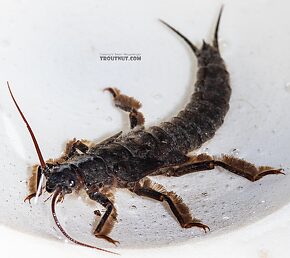 View 5 PicturesThis salmonfly nymph is probably not quite fully grown, as it still has a couple months yet to emerge.
View 5 PicturesThis salmonfly nymph is probably not quite fully grown, as it still has a couple months yet to emerge.
 View 5 PicturesThis salmonfly nymph is probably not quite fully grown, as it still has a couple months yet to emerge.
View 5 PicturesThis salmonfly nymph is probably not quite fully grown, as it still has a couple months yet to emerge.Collected April 9, 2021 from the Yakima River in Washington
Added to Troutnut.com by Troutnut on April 12, 2021
Added to Troutnut.com by Troutnut on April 12, 2021
Dixidae True Fly Pupa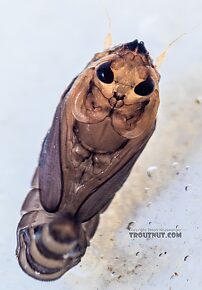 View 6 Pictures
View 6 Pictures
 View 6 Pictures
View 6 PicturesCollected September 12, 2020 from the Yakima River in Washington
Added to Troutnut.com by Troutnut on September 19, 2020
Added to Troutnut.com by Troutnut on September 19, 2020
Female Baetis tricaudatus (Blue-Winged Olive) Mayfly Dun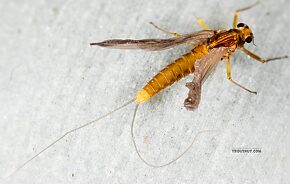 View 6 PicturesThis one emerged from a nymph of this kind in my studio but got a bit waterlogged before I could pull it out to photograph.
View 6 PicturesThis one emerged from a nymph of this kind in my studio but got a bit waterlogged before I could pull it out to photograph.
 View 6 PicturesThis one emerged from a nymph of this kind in my studio but got a bit waterlogged before I could pull it out to photograph.
View 6 PicturesThis one emerged from a nymph of this kind in my studio but got a bit waterlogged before I could pull it out to photograph.Collected September 12, 2020 from the Yakima River in Washington
Added to Troutnut.com by Troutnut on September 19, 2020
Added to Troutnut.com by Troutnut on September 19, 2020
Start a Discussion of the Yakima River:
Top 10 Fly Hatches
Top Gift Shop Designs
Eat mayflies.
Top Insect Specimens
Miscellaneous Sites
Troutnut.com is copyright © 2004-2024 Jason
Neuswanger (email Jason). See my FAQ for information about use of my images.
 privacy policy
privacy policy
